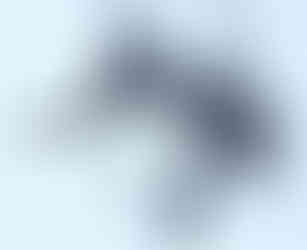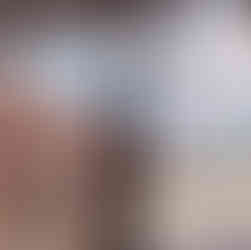How to Photograph Yourself Doing Aerial.
- erin brown thomas
- Nov 26, 2019
- 5 min read
Updated: Nov 30, 2019
When I started doing aerial six years ago I knew I wanted to document every workout. Mainly, I wanted to track my progress, but I also wanted to review footage between sessions to cement choreography and movement phrases into my mind. Sometimes I filmed my workouts from my canon DSLR. But often, it was just from my iPhone 6.
Being a filmmaker, I thought a lot about where I would prop my phone when recording. The angles, the lighting, etc... I've come up with a set of guidelines that I've used to capture my own workouts. These so-called-rules have also informed a lot of our versatile assassins videos.
So... I'm going to break down some helpful tips here:
First tip...
Capture video, then take a screenshot.
Even if you have someone taking photos for you, it's better if you ask them to take a video. You can always pull a still or a screenshot from it. AND... (as I said before) I love reviewing old videos to remind me of choreography and help me track my growth.
Spin!
When you're first starting out in aerial (or learning a new movement sequence) it's best to avoid spinning. However, once you are comfortable, spinning makes aerial look more dynamic in video, and it will also help you pull a better screenshot, because you can pick the angle that looks best for your lines. One thing that has helped me is to SLOW DOWN my movements so that each one naturally takes a full spinning rotation. This way I don't have to hold a "pose" while waiting for the silk to turn all the way around. Also... I think aerial looks more graceful and effortless when it's done at an intentionally relaxed pace.
Don't shoot from below

There are exceptions to every rule, and I will admit that there are a few "moves" or "tricks" that can look quite compelling from right underneath. But for the most part, I'm of the opinion that aerial looks best when you are viewing it from the side.
You can avoid a lot of crotch shots, and capture more interesting shapes when your camera is perpendicular to the plane of space your body is creating. Imagine how different this shot would look if I had the camera angled low from right beneath me.
Clean background
You want your body to be the focus of your photograph, not the stuff hanging on the wall.
So, if you practice in a studio with a busy wall, avoid using that wall as a backdrop. Here's a photo Christa took of me training at Aerial Warehouse when Mark and Selkie were out of town a few years back. Christa angled her camera so that the empty part of the wall was behind me. Compare that to another photo taken in the exact same space by another (less experienced) aerial photographer. I'm doing a doubles act with Kassandra Kernes, and we are both getting lost in the background.
If you can't get a super simple background, I recommend shooting with a greater depth of field if possible. Longer lenses (if you are shooting in a big space) and/or a more open iris can help you achieve that.
Pro tip... a simple, brighter background can be really compelling and allow you to create a silhouette...
Silhouettes are your friend
My favorite images of myself are always ones where you can't really tell it's me. It's not that I don't like the way I look, it's simply that I find the picture to be more powerful in silhouette form - where I could be anyone or represent anything.
Silhouettes are powerful communicators -- compelling and memorable, they burn shapes into your mind very effectively. One simple way to create silhouettes in your videos-- shoot with a large window behind you. Not everyone has access to a space like Mark's (where Selkie and I often train), so another great way to create a silhouette is by shooting outside with the sun behind you.
It's all about backlight.
If you can't do aerial in front of a window or outside with the sun as backlight, throw some indoor lights on behind you. The effect works extra well if you add smoke like we did for Eye of the Needle and Once Upon A Dream.
Here's a shot of me doing a light test on our Eye of the Needle set, while Selkie was still getting ready.

Film yourself from far away

I love seeing how high I am in relation to the ground!
It's hard to communicate how high up we are in a picture unless you either shoot from right beneath you on a wide lens or shoot from far away. As I stated above, aerial doesn't often look as good from right below, so I recommend putting your camera as far away as you can.
Train in a small studio that makes this hard? Install a mirror on the wall and film yourself in the reflection! This will double the distance and help you capture some of that height! In the shot below, Mark was standing only a few feet from me, but he was able to capture my full body with ease!

and speaking of...
Play with Mirrors!
In addition to finding artistic angles, and making your space look bigger, you can create all kinds of illusions with mirrors. Take this shot... I propped my phone on Mark's glass table and made it look like there was no floor!

Tell a story with your framing
Ask yourself, "What do I want my choreography to evoke today?" Of course song can assist in creating a tone or mood, but your framing itself can tell a story. Sometimes I like shooting through foreground objects to evoke a voyeuristic feeling like in the images below:
Or... if hard light falls on you from a window while you're practicing, another fun idea is to make it moody by capturing your shadow!
Choose your outfit
Since photographing aerial is about capturing shapes you make with your body, it stands to reason that your outfit could greatly influence the outcome.
Notice how tight yoga pants and a sports bra will film differently than a loose fitting shirt, especially once you start spinning and your fabric starts defying gravity.
A few years ago I did aerial in a skirt. I love how soothing it is to watch the skirt dance as I do a simple spin.
If you follow Selkie on instagram, I'm sure you've noticed that she always wears loose fitting clothes. She will dive deeply into her reasoning for this personal choice in more detail on another blog post, so stay tuned for that!
Dynamic Angles
Often when we train, we have to prop our phone and get a stationary shot. However, when you train with a coach or a friend, you can move the camera around to find the perfect shot. Here's a picture I took of Mark that I really love.
I love the layout. I like how the lines where the ceiling and walls meet run to the corner of the image. I like how Mark is positioned towards my camera, with a pose that suggest forward motion. I've always said he looks like an avenger in this shot.

This photo is really a great example of most of my "rules" working together well.
1. Mark was spinning, so I was able to get a shot of him when he was perpendicular to my camera.
2. Since I'm not standing far away from Mark, I make sure to hold the camera up high.
3. The backlight is separating Mark from the (relatively simple) background behind him. It's also making his shoulders look nice and defined as they are engaged.
4. Mark is mostly in silhouette, making his body stand out from the background even more.
5. The framing is telling a story - making Mark look powerful.
6. Mark's outfit (or lack of top) is effective with the particular pose for this photo.
I hope you found these tips to be helpful!
Comment below with other tips, or upload photos and show me how you are implementing these ideas into photographing your training!
- Erin :)

























